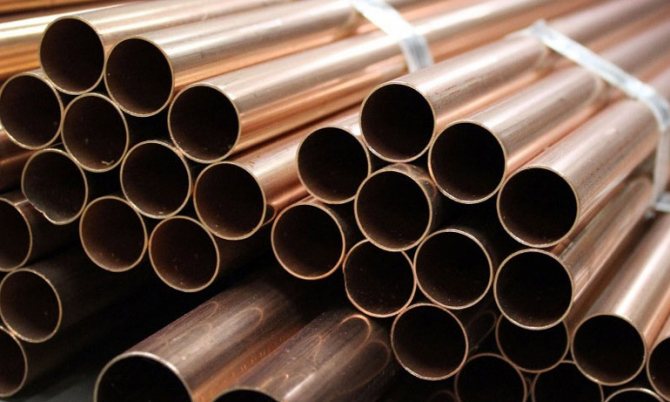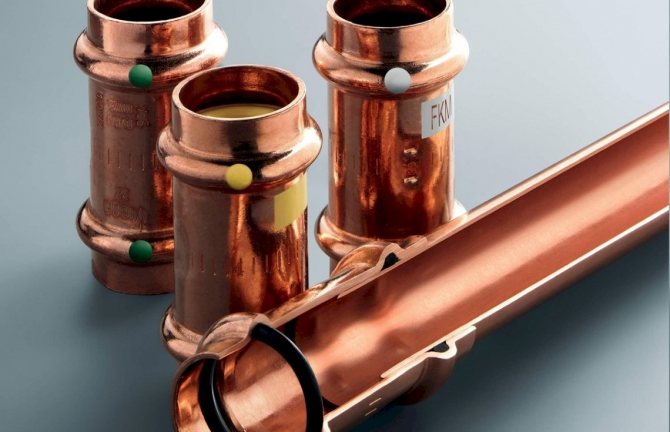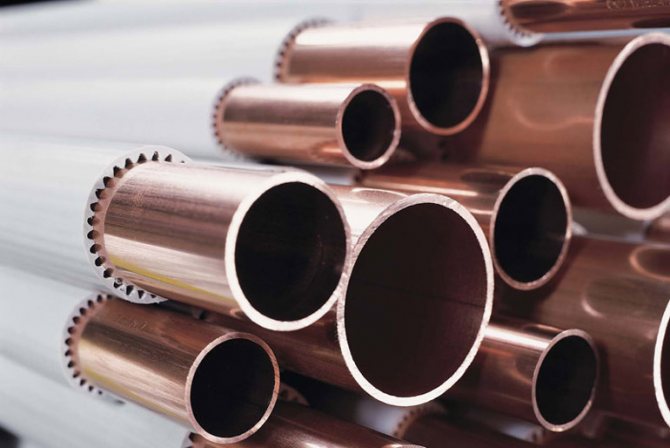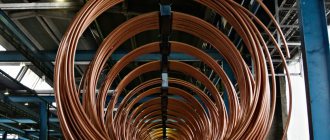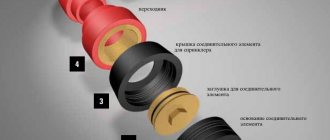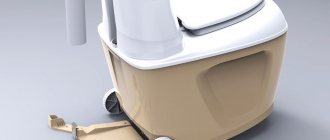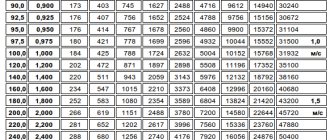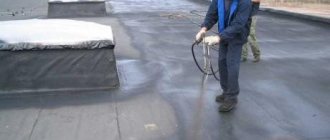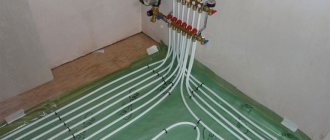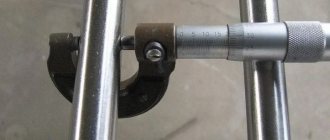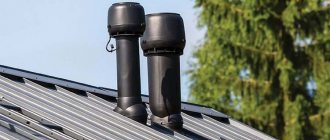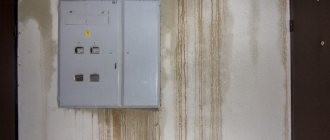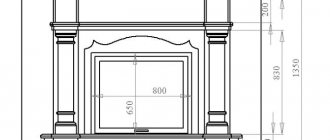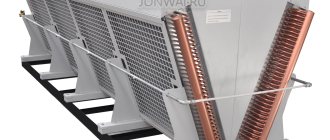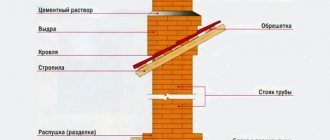Features of copper pipes
These products are made on the basis of seamless production technology. The material for copper products does not enter into chemical reactions, it is impermeable to various types of liquids, such as fats, oils, and does not promote the growth of viruses and bacteria.
It is known that tap water contains chlorine, but it does not contribute to the destruction of copper pipes, but promotes the formation of a protective layer on their inner surface against oxidative processes, which gives the pipelines increased stability and strength.
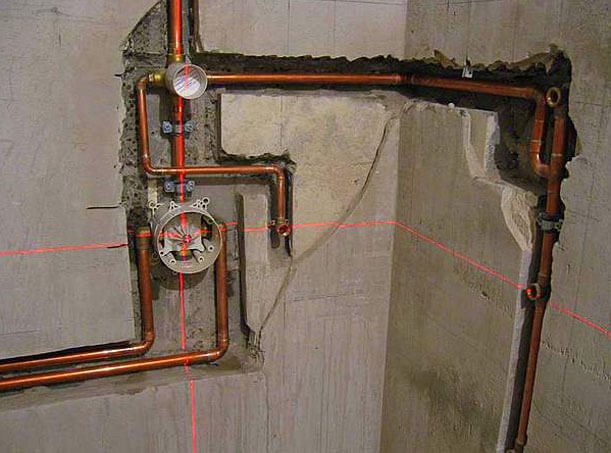
By analogy with plastic products, build-ups from all kinds of deposits, for example, such as limescale, are almost not formed on copper pipe products. According to the provisions of GOST, a copper pipe can be in working condition at a temperature range between -200 and +250 degrees. These products are very resistant to sudden changes in temperature, since they are characterized by an insignificant value of the coefficient of thermal expansion.
Copper pipes, when water freezes in them, remain intact and in a sealed state. Unlike plastic pipe products intended for water and heat supply, ultraviolet light is not dangerous for copper products. They are painted not so much to protect the pipeline, but to give it an appropriate appearance. Today, in order to increase the attractiveness of copper products, chrome-plated products are produced from this material.
Since such pipes are characterized by a low roughness index in comparison with products made of metals and polymers, under equal conditions it is possible to lay a pipeline of a smaller cross-section.
Pros and cons of copper pipes
Like any material, copper pipes have pros and cons. Knowing them, you will independently determine which material is best suited for your conditions.
Comparison with steel pipes
- Longer service life (according to the technical data sheet for pipes, at least 50 years).
- Easy installation - no expensive and complicated welding work required.
- It is easier to bend the pipes.
- Less weight.
- They are not afraid of subzero temperatures and freezing of water inside.
- They are more expensive.
- Press jaws are required for the installation of press fittings, an open flame is required for brazing.
Comparison with PVC, PP, PE and XLPE pipes
- Withstand temperatures up to 110 degrees.
- UV resistant.
- The maximum pressure is above 200 atmospheres (bar).
- High strength solder joints.
- The presence of stray currents.
- Susceptible to corrosion on contact with steel.
- Using a gas torch for solder connections.
Comparison with corrugated stainless steel pipes
- Resistance to aggressive influences. Copper is covered with an oxide layer that protects the pipe material from aggressive substances.
- Less pipe price.
- Fittings are 2-3 times cheaper (for soldering).
- Stronger connection (soldered).
- For a high-quality soldering connection, a gas burner must be used.
Scope of copper pipelines
The area of use of copper pipe products is extensive, but most often they are used for laying:
- heating systems;
- pipelines for water supply;
- highways through which compressed air or gas is transported;
- fuel pipelines;
- condensate drainage systems;
- structures for connecting technological equipment;
- pipelines supplying freon to refrigeration units;
- air conditioning systems, etc.
Scopes of copper pipelines
The areas of use of copper pipes are very numerous.
Most often, such pipes are used in the following systems:
- in heating pipelines;
- in water supply systems (both hot and cold);
- in pipelines transporting gas or compressed air;
- in freon supply systems in refrigeration equipment;
- in hydraulic systems for oil supply;
- in fuel lines;
- in condensate drainage systems;
- when connecting technological equipment;
- in air conditioning systems and others.
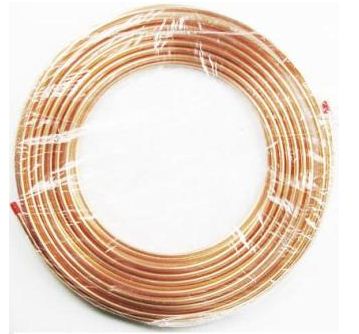

1/4 copper pipe is used to connect the external unit of the air conditioner to the internal
Methods for the production of copper pipe products
Copper pipe sizes vary. When arranging household systems, copper products of two types are usually used:
- unannealed (in more detail: "Types of copper unannealed pipes, characteristics, areas of use");
- annealed.
The first type of pipes are sold in straight lengths ranging from 1 to 5 meters.
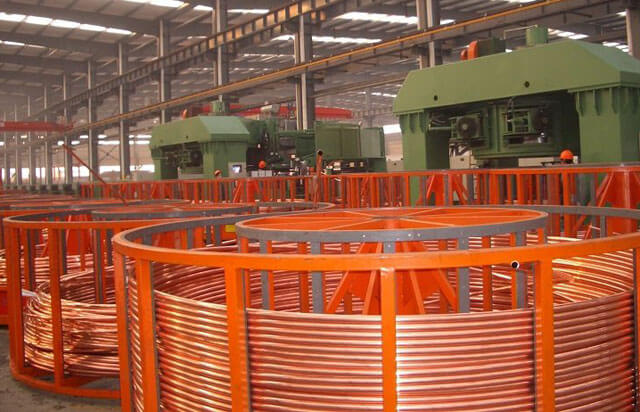

In the second case, the products undergo heat treatment - they are fired, after which they become soft, and the strength characteristics decrease slightly, but the installation of copper fittings becomes easier. Annealed pipes are sold to consumers in lengths from 2 to 50 meters, packed in bays.
In addition to products with round sections, manufacturers produce rectangular products. Due to their non-standard shape, such pipes are difficult to manufacture and therefore their cost is higher compared to conventional products.
Cold Store
In freon refrigeration units based on a vapor compression cycle, copper pipelines are most widely used, this is due to the following properties of copper pipelines: chemical resistance to refrigerants in an oxygen-free and anhydrous environment, low roughness of the inner surface, plasticity, good resistance to cyclic loads, low thermal expansion, significant service life. In addition, refrigeration pipelines are much easier to machine and can be connected either by soldering or welding, or using dismountable joints.
In refrigeration and air conditioning systems, one-piece cold-deformed or extruded copper pipe with a round cross-section is used. In Russia, the production of such a pipe is regulated by GOST 617-2006, the most famous standards of other countries are EN 12735-1 (European standard), ASTM B280 and ASTM B69-99 (American standards). If GOST 617-2006 defines the production of copper pipes for general use, then the standards EN-12735 and ASTM B280 are specially designed for copper pipelines of refrigeration and air conditioning systems. ASTM B69 - Designed for bright annealed copper pipes in refrigeration and other industries where a pipe with a clean inner surface is required. Plants that produce copper pipes for refrigeration systems most often produce pipes in accordance with the plant's specifications, and then the pipe is certified under one or another standard that is valid in the state where this pipe is used. The given standards define: copper grade for pipes, manufacturing method, geometric dimensions of copper pipes, packing method, test methods, pipe marking, storage methods, and also contain links to other regulatory documents.
Copper pipe for refrigeration and air conditioning systems is produced in solid state - R290 (unannealed), semi-solid state - R250 and soft state - R220 (annealed). The pipe in solid and semi-solid state is produced in the form of straight strings with lengths of 3, 5 and 6 meters.The soft pipe is produced in the form of pieces coiled into coils of 15, 25, 45, 50 m. Copper pipe can be made with metric or inch outer diameters. Standard range of metric sizes: 6 - 8 - 10 - 12 - 15 - 16 - 18 - 22 - 28 - 35 - 42 - 54 - 64 - 76 - 89 - 108 mm. Standard inch range: 1/4 - 5/16 - 3/8 - 1/2 - 5/8 - 3/4 - 7/8 - 1 1/8 - 1 3/8 - 1 5/8 - 2 1 / 8 - 2 5/8 - 3 1/8 - 3 5/8 - 4 1/8 inches.
Choosing a copper pipe for refrigeration systems can be summarized as follows:
- choose whether it will be a soft pipe or a hard one;
- after hydraulic calculation and strength calculation, the pipe diameter and wall thickness are known;
- determine, taking into account the safety factor, the wall thickness for the pipe;
- then select the appropriate one from the standard pipe nomenclature;
- a pipe is ordered.
In most cases, a copper pipe made in accordance with EN 12735-1 and ASTM B280 meets all standard solutions in the field of refrigeration and air conditioning systems and most often exceeds the required strength characteristics. But, refrigeration systems are often subject to pulsations, vibrations, and water hammer, so the safety margin will not be superfluous. In addition, work with a soft pipe manufactured according to these standards - as a rule, receives only positive feedback. It is possible, sometimes even necessary, to use a pipe with a wall thickness less than the above standards, but it must be remembered that with a decrease in the wall thickness of the pipeline, the reliability of the system also decreases, this is especially critical for systems with a significant refrigerant charge. And, as a rule, emergency shutdowns due to poor-quality pipe are many times more expensive than saving on wall thickness.
When buying a copper pipe, it is advisable to pay attention to the presence of markings along the entire length, the presence of plugs at both ends, the absence of external damage, the inner surface must be clean, smooth and dry. The pipe must be made of copper with a copper and silver content of at least 99.9%, a phosphorus content of not more than 0.4%. Wall thickness can be checked using the theoretical copper pipe weight table.
Theoretical weight of millimeter copper pipe
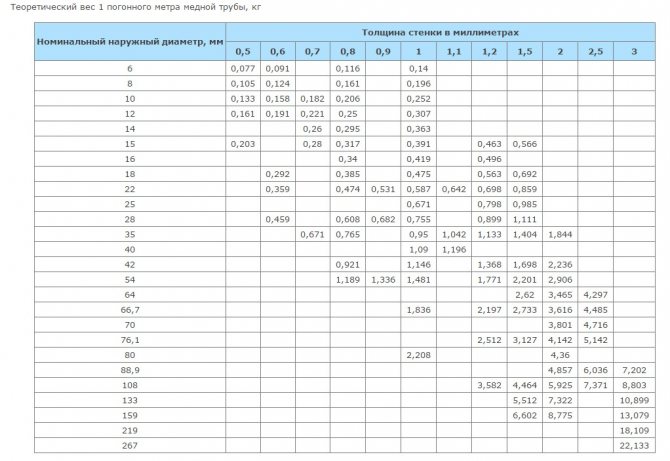

Theoretical weight of inch copper pipe
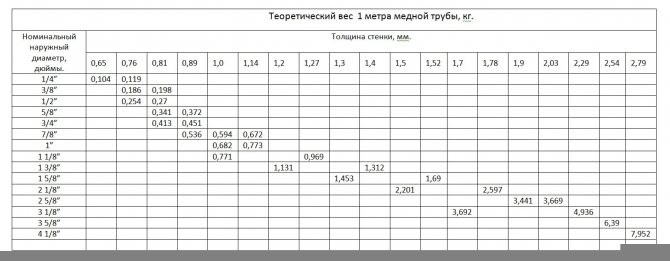

Feature of the installation of copper pipelines
Before you start creating a copper pipeline, you should make the necessary measurements and cut the pipes into pieces. The cut of the product should turn out to be smooth and therefore use a special cutter. By the way, no thread is made on copper pipes.
The connection of individual sections of a copper pipeline can be performed in the following ways:
- by soldering;
- pressing.
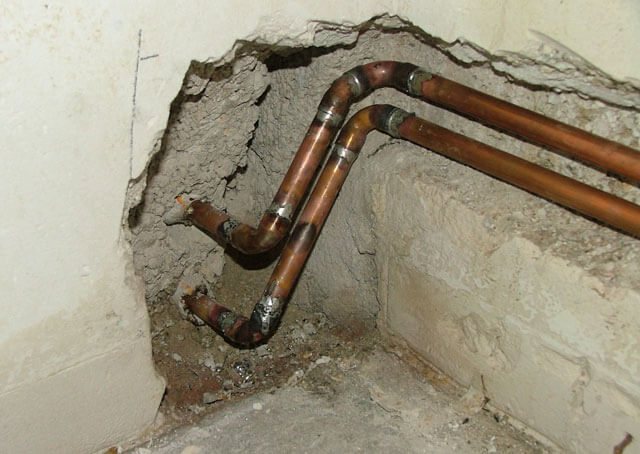

The most effective of them is docking using capillary brazing technology, so it has become more widespread. This method ensures the reliability and absolute tightness of the pipe joints. Square copper products are connected using capillary soldering, which is performed using fittings and sockets.
This method of laying pipelines from copper components is used when the pipeline is planned to be operated in conditions of extremely high temperatures.
Compression joining involves the use of different types of fittings, including compression and self-locking. Also, special flanges and clamps are used to provide a tie. Pressing is used in cases where an open flame cannot affect the pipeline.
Fittings for connecting copper pipes
Copper fittings are shaped elements by means of which separate sections of the pipeline are joined together. Copper pipe fittings are available in the following configurations:
- parallel couplings;
- tees;
- squares (45 and 90 degrees);
- crosses.
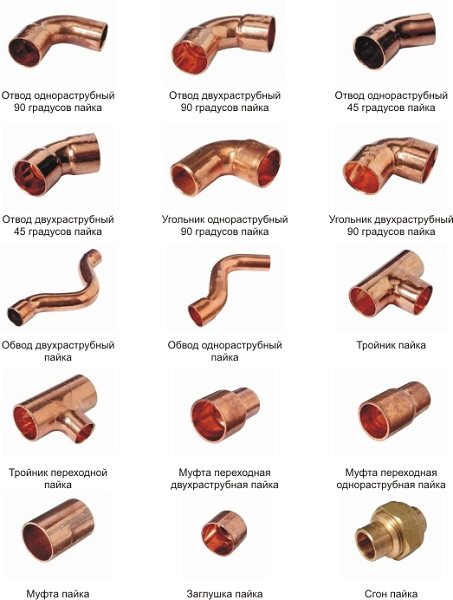

The above copper fittings can be of the same size - for connecting pipes of the same diameter, or transitional - for connecting sections of the pipeline of different sizes.
Solder fittings
Joint products designed for soldering are called capillary. Their inner walls are covered with a thin layer of tin solder - the molten solder fills the gap between the walls of the joining products and, after hardening, firmly adheres them to each other.
The environment of high-quality products for soldering is Sanha fittings. This company manufactures copper fittings of all common standard sizes according to German quality standards from alloy grade CW024A. The connections are able to withstand pressures in the range of 16-40 bar and an operating temperature of 110 degrees.
The technology for connecting copper pipelines by soldering is quite simple to perform:
- The abutting surfaces of the pipe and fittings are cleaned of contamination, degreased and processed with fine-grained emery paper.
- A layer of low-temperature flux up to 1 mm thick is applied to the pipe walls.
- The connecting elements are joined together, after which the joint is heated with a hot air gun or gas burner to a temperature of 400 0 for 10-15 seconds
. - The cooling time of the joint is waited, after which the remaining flux is cleaned with a rag.
It is necessary to perform soldering in a ventilated room, since gases harmful to the body are released during the melting of solder and flux.
Collet connections
Collet, they are also compression fittings for copper pipes, perform a serviceable connection to be dismantled. All are classified into two groups:
- "A" - for products made of solid and semi-solid copper;
- "B" - for soft copper pipes.
They differ in that "B" class fittings have an internal sleeve - a union, onto which the connected sections of the pipeline are mounted. The nipple acts as a support element to prevent deformation of the copper walls during crimping.
Connection mounting technology:
- A union nut and a split ring are put on the pipe.
- The ring is placed at a distance of 1 cm from the cut.
- The pipe is pushed onto the nipple of the fitting.
- The union nut is tightened by hand until it stops, after which it is pulled out using an adjustable or open-end wrench.
Press connection
For copper pipes, they consist of a body, a union and a crimp sleeve. Their installation takes a minimum of time - the abutting sections of the pipeline are inserted into the seat on the fitting, after which the sleeve is crimped using press tongs. This tool can be rented at a plumbing store or bought, prices start at 3 thousand rubles.
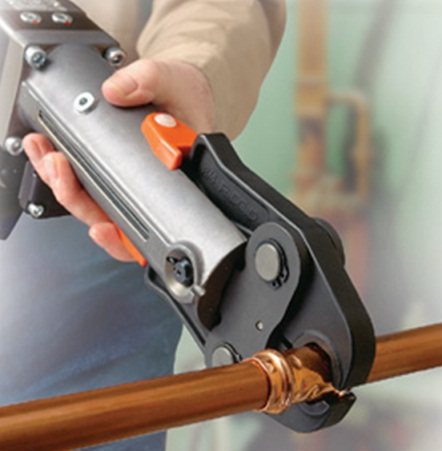

Such a connection is maintenance-free, unlike a collet joint, you cannot dismantle it without breaking the integrity of the fitting. In the event of leaks, the connector must be replaced. Note that press fittings are the most reliable and durable, their service life reaches 30 years.
Despite everything, copper pipes have been and remain one of the most demanded materials for the construction of pipelines for various purposes, along with metal, plastic and other types of products. According to GOST, a copper pipe can be used in many sectors of the economy, which is due to the peculiarities of mainly copper itself, as well as the technology of seamless pipe production.
In this article, a general description of copper pipes will be given, their properties and some features of installation will be announced.
Copper Pipe Fittings
For laying copper pipelines, fittings of a crimp or solder type are used. The first type of connecting elements is usually made of brass.The tightness of such a joint is ensured by the presence of a compression ring inside the fitting, which is tightened with a wrench. A crimp fitting is used to connect pipes of different diameters at the location of the pipeline, provided that there is access to check the tightness (in more detail: "Which crimp fittings for copper pipes are better to use, the rules for choosing compression fittings and installation").
Such parts are usually involved when it is necessary to lay a line designed for operation, when the working medium moves along it under low pressure. In this case, during the operation of the pipeline, it is necessary to periodically monitor the condition of the fittings.
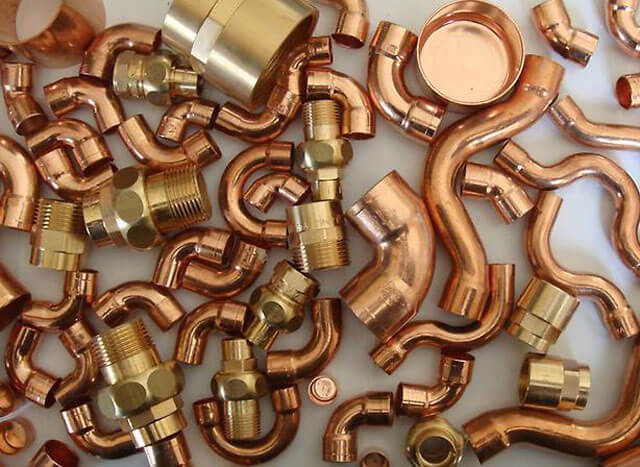

The connection process is carried out in the following sequence:
- The fitting is disassembled into its constituent parts.
- The clamping nut and the clamping ring are placed on the pipe.
- The end of the pipe, which has a ring and a nut, is inserted into the fitting.
- The nut is fixed until it stops, and the tapered ring must be inserted into the tapered part without skewing.
- The nut is tightened with a wrench 0.5-1.25 turns - which depends on the diameter of the pipe used.
When performing the work, the main thing is not to overdo it, because with too much force applied, the wall of the pipe products can be damaged.
The above type of connection cannot be called perfect - compression fittings often leak, so their condition should be constantly monitored.
Types of copper pipes and fittings
According to GOST R 52318-2005, copper pipes are divided into soft, semi-hard and hard. If you see the inscription on the package (bay) of the pipe - "annealed", this is a pipe made of soft metal. According to GOST: the pipe is in a soft state. Such pipes can withstand pressure up to 220 atmospheres, semi-solid - up to 250, solid - up to 290. If the packaging says "unannealed", this is a semi-solid or solid pipe, which is difficult to work with.
In the water supply systems of houses and apartments, the water pressure does not exceed 7 atmospheres, therefore, semi-solid and solid pipes do not have any advantages over soft ones. The harder the pipe, the greater the bending radius and the less resistance to subzero temperatures. Soft pipes are more expensive, but easier to install.
For installation in concrete and protection against stray currents that damage the water supply, copper pipes are covered with a film of PVC, polyethylene or other polymers. The insulation will increase the thickness of the pipe by 0.5-1 mm, but will keep it from corrosion.
If you are laying the plumbing by air, purchase a pipe without film. If, after laying the water supply, some of the pipes are filled with concrete, use pipes with insulation.
Compression fitting
Fittings for copper pipes are available in the following types:
- crimp;
- capillary for soldering;
- with fused solder;
- compression.
In terms of the reliability of the connection in the water supply system of a house or apartment, all fittings are the same. The difference between them appears at pressures over 100 atmospheres. Purchase the type of fittings for which you have the equipment to install.
Buy all fittings in one system. If you took part of the crimp and part of the capillary for soldering, you will need two sets of tools to install different types of fittings.
Fittings are made from inexpensive hard copper, so do not overpay for a dishonest advertising move when the label “made of soft annealed copper” is written on the packaging or on the price tag.
Each manufacturer has its own product tolerances. In this case, fittings are made to fit the pipe size. If you are installing capillary brazed plumbing, purchase pipes and fittings from one manufacturer. A difference of a tenth of a millimeter will break the capillary effect and the connection will be weak.
Docking copper pipes with other materials
When laying communications from copper pipes, they can be docked with pipe products made of plastic, steel and brass.With regard to the connection with galvanized products, experts recommend avoiding such combinations, since there is a high probability of chemical processes between two elements - copper and zinc.
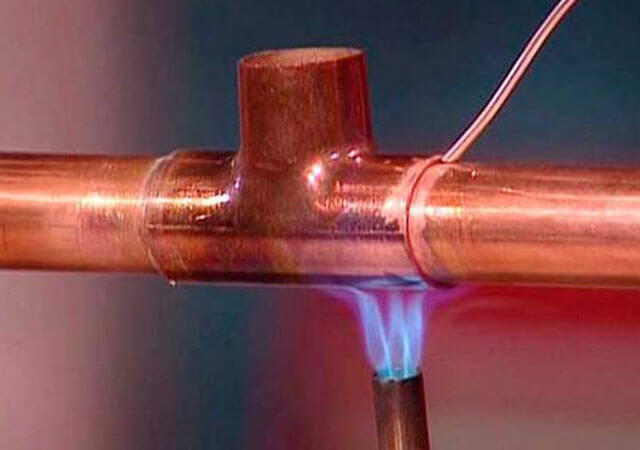

When joining pipes of this type, brass fittings are used - they are mounted so that the movement of the water flow occurs in the direction from zinc to copper.
Modern copper pipe products are durable and therefore such a water supply system will be an excellent choice.
The main characteristics of copper products
The main performance characteristics of copper pipes are regulated by GOST. According to the regulatory document, copper products can be made from alloys. One of the most commonly used alloys is brass. By adding other elements, a material with different properties can be obtained. But the main characteristics of copper products are as follows:
- High corrosion resistance;
- Flexibility;
- UV resistance;
- High resistance to temperature changes;
- High thermal conductivity;
- Strength;
- Environmental friendliness;
- Vibration resistance;
- Long service life.
Copper products are 100% recyclable. Their only drawback is their relatively high cost.
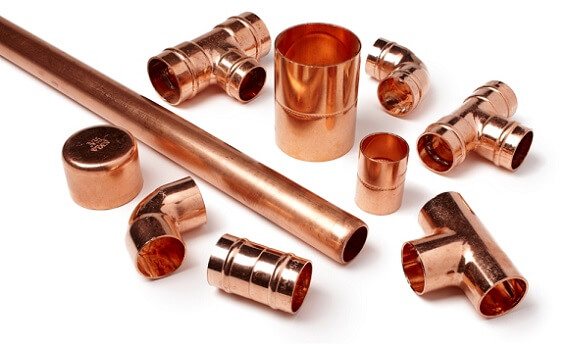

Copper products
In order for copper products to serve for many years, it is necessary to take into account their purpose, as well as:
- Dimensions;
- Diameters;
- Wall thickness;
- System pressure;
- Isolation available.
In accordance with the standard sizes, the pipe can be:
- Thin-walled;
- Thick-walled.
A thin-walled pipe is used in those areas where a light and at the same time durable communication system is needed (in shipbuilding, automotive, aviation). A thick-walled pipe has increased strength, therefore it is used when transporting liquid and gaseous substances. A thick-walled pipe is made in the following ways:
- Welded;
- Seamless.
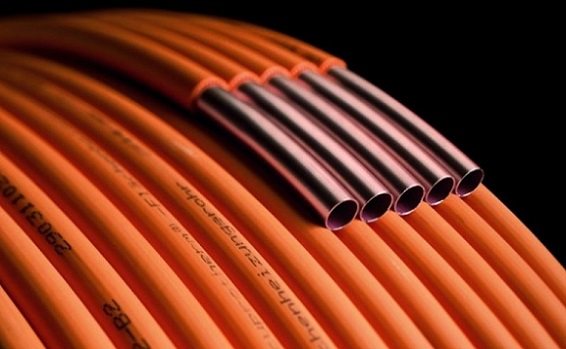

Copper pipes for underfloor heating
Also, according to the standards, the assortment of copper products can be of different sections:
- Round;
- Rectangular;
- Square.
A circular pipe is intended for water supply and heating systems, and a rectangular profile pipe is mainly for the field of mechanical engineering. The profile pipe has the following positive characteristics:
- Does not deform;
- Has high strength;
- Withstands heavy loads;
- It is relatively light in weight.
The profile pipe has excellent resistance to loads, therefore it is practically indispensable in construction, as well as in the automotive industry. In order to make sure that the product meets all quality standards, it is necessary to compare its real weight with the weight according to GOST.
